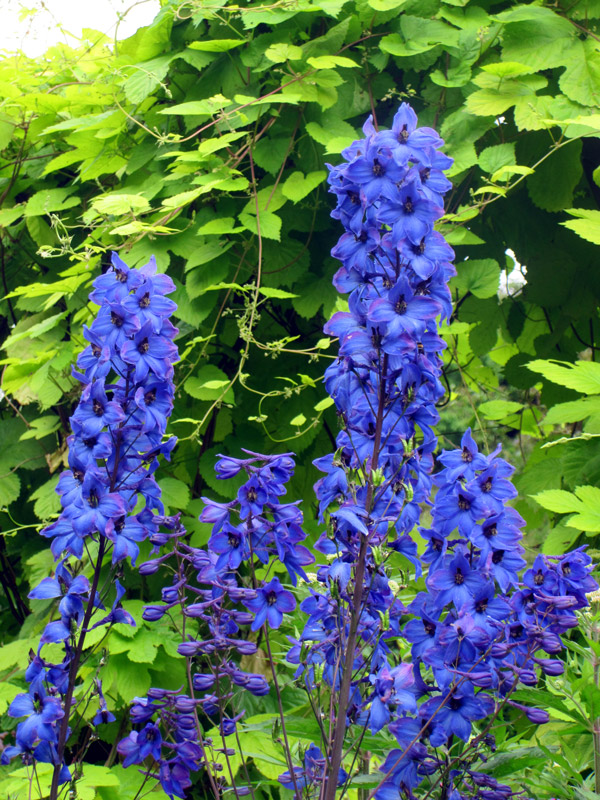Delphiniums are perhaps the most structural perennials you can have in a garden; the Pacific hybrids, in particular, often exceed 2 metres in height and possess, in my opinion, the most beautiful palette of blues. I have often been impressed by stunning photos in books and magazines, and I have always implicitly considered delphiniums to be robust and easy-going perennials, in the "foolproof-recommended-for-beginners" category..... So much for theory!

Delphinium Blue Bird, gentian blue flower spikes perched over 2m high
When I moved on to practical work, under normal (Norman) conditions, I changed my mind. It is very easy to fail with delphiniums.
I have tested for you 5 foolproof ways to fail with delphiniums. Here they are exclusively.
1- Slugs. When they are small, if you have a somewhat damp garden, delphiniums are first devoured by slugs, which often end up overcoming them. With hostas, the leaves are sometimes lacerated, but at least they survive the incessant attacks! Delphiniums may grow quickly, but slugs love the young foliage....
So lesson No. 1, to fail with delphiniums, do not protect them from slugs
2- Shade or partial shade. If delphiniums survive slugs, planted in a shaded position, the growing conditions will take their toll. Delphiniums love the sun.
Lesson No. 2, to fail with delphiniums, plant them in the shade.
3- Heavy, waterlogged soil. A meadow plant, delphiniums prefer rather rich but very well-drained soils. In heavy soil, they will languish and die or grow very slowly... and still die!
Lesson No. 3, to fail with delphiniums, plant them in heavy, wet soil.
Assuming that despite this advice, your delphiniums are growing well, yes, it does happen, here’s another tip:
4- Do not stake your delphiniums. As they grow, the stems break with a good storm or a strong gust of wind.
Lesson No. 4, to fail with your delphiniums just before or during flowering, do not stake them. Possible variant: break the stems while staking, either at the first staking at 60cm, or at the second at 1.20m.

Delphinium belladona Bellamosum, more robust it does not bend. Set against a golden backdrop (made of golden hop), its intense blue inflorescences contrast and catch the eye.
This is the rich experience (slightly exaggerated) I have had in my heavy, wet soil in Normandy.
This is to say that delphiniums are perfect for sunny, wind-protected situations, in well-draining soil. But in less favourable conditions, they require care.
For my part, I continue to grow and appreciate the new hybrids, particularly the elatum hybrids, which are more tolerant of soil type, or the belladonna which are more robust and do not require special care.
My growing experience with pacific delphiniums has evolved; in my heavy soil, I add sand and gravel at a ratio of 1/3 each, which I mix into my soil to a depth and width of 30cm. Then I no longer plant the small pots directly into the ground but repot them into a larger container that I keep on my terrace for a year, and to strengthen the plant as much as possible, I remove all flower spikes to encourage the stump to grow.

Delphinium belladona, an old hybrid that is very resilient and trouble-free.































Comments